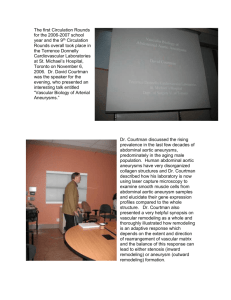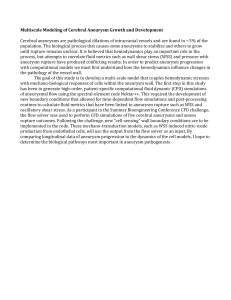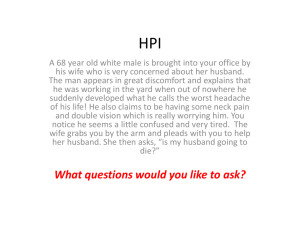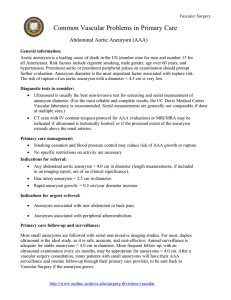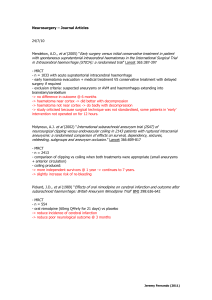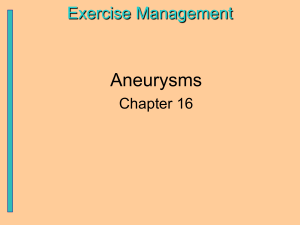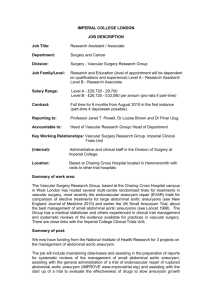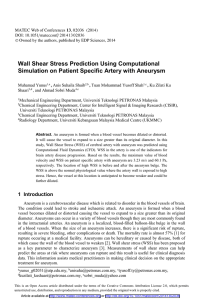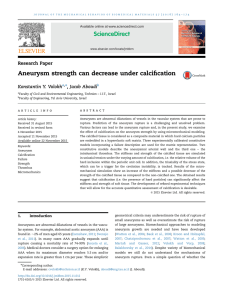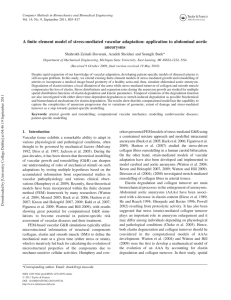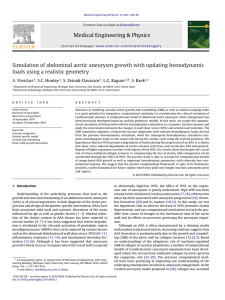Aortic Aneurysm
advertisement
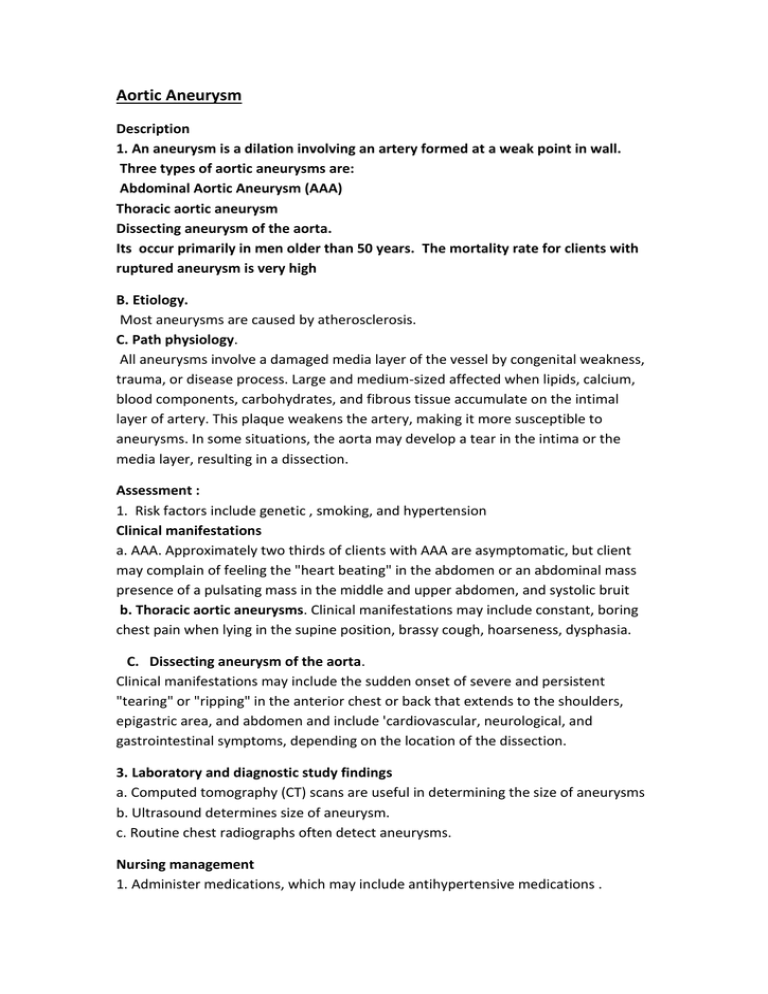
Aortic Aneurysm Description 1. An aneurysm is a dilation involving an artery formed at a weak point in wall. Three types of aortic aneurysms are: Abdominal Aortic Aneurysm (AAA) Thoracic aortic aneurysm Dissecting aneurysm of the aorta. Its occur primarily in men older than 50 years. The mortality rate for clients with ruptured aneurysm is very high B. Etiology. Most aneurysms are caused by atherosclerosis. C. Path physiology. All aneurysms involve a damaged media layer of the vessel by congenital weakness, trauma, or disease process. Large and medium-sized affected when lipids, calcium, blood components, carbohydrates, and fibrous tissue accumulate on the intimal layer of artery. This plaque weakens the artery, making it more susceptible to aneurysms. In some situations, the aorta may develop a tear in the intima or the media layer, resulting in a dissection. Assessment : 1. Risk factors include genetic , smoking, and hypertension Clinical manifestations a. AAA. Approximately two thirds of clients with AAA are asymptomatic, but client may complain of feeling the "heart beating" in the abdomen or an abdominal mass presence of a pulsating mass in the middle and upper abdomen, and systolic bruit b. Thoracic aortic aneurysms. Clinical manifestations may include constant, boring chest pain when lying in the supine position, brassy cough, hoarseness, dysphasia. C. Dissecting aneurysm of the aorta. Clinical manifestations may include the sudden onset of severe and persistent "tearing" or "ripping" in the anterior chest or back that extends to the shoulders, epigastric area, and abdomen and include 'cardiovascular, neurological, and gastrointestinal symptoms, depending on the location of the dissection. 3. Laboratory and diagnostic study findings a. Computed tomography (CT) scans are useful in determining the size of aneurysms b. Ultrasound determines size of aneurysm. c. Routine chest radiographs often detect aneurysms. Nursing management 1. Administer medications, which may include antihypertensive medications . 2. Prepare the client for serial ultrasonography, which is conducted every 6 months to assess size of aneurysm. 3. Ensure that no additional pressure is exerted in abdominal cavity, such as enemas, tight belts, or trauma. 4. Implement nursing care for the client undergoing surgery to repair aneurysms When the aneurysm is larger than 5 cm or there is a possibility .of rupture, it will surgically removed 5. After-surgery, instruct the client to modify lifestyle as the client diagnosed With hypertension Cardiovascular status Monitor and record vital signs, I/O, neurovascular checks, and laboratory studies Administer medications, as prescribed Encourage the patient to express feelings such as a fear of dying Assess pain Check peripheral circulation: pulses, temperature, color, and complaint of abnormal sensations Allay the patient's anxiety *Observe the patient for signs of shock, such as anxiety; restlessness; decreased pulse pressure; increased thready pulse; and pale, cool, moist, clammy skin. *Assess the abdomen for distention *Individualize home care instructions *Recognize the signs and symptoms of decreased peripheral circulation, such as change in skin color or temperature, complaints of numbness or tingling, and absent pulses *Adhere to activity limitations, alternate rest periods with activity, adhere-to prescribed exercise regimen *Maintain a quiet environment Complication Rupture of aneurysms Hemorrhage Renal insufficiency Possible surgical intervention Resection of aneurysm Endovascular graft repair Abdominal Aneurysms Definition Dilation of or localized weakness in the medial layer of an abdominal artery Causes Most common Atherosclerosis , Hypertension , Smoking Less common Congenital defect , Trauma ,Syphilis , Infection Marfan syndrome Path physiology Degenerative changes from atherosclerosis, weakening the medial layer Continued weakening from the force of blood flow, resulting in out- pouching of the artery Four types: saccular, fusiform, dissecting, false (see Types of aortic aneurysms) Assessment findings Asymptomatic Lower abdominal pain, lower back pain Abdominal mass to the left of the midline Abdominal pulsations Bruits Diminished femoral pulses Systolic blood pressure in the legs lower than that in the arms Deep, diffuse chest pain Hoarse voice Coughing Dyspnea Dysphagia Jugular vein distention Edema Diagnostic test findings Chest X-ray: aneurysm ECG: differentiation of aneurysm from MI Abdominal ultrasound: aneurysm Aortog-raphy Medical management -Activity: bed rest Monitoring: vital signs, I/O, and neurovascular checks Analgesic: oxycodone (Tylox) Beta-adrenergic blocker: propranolol (Inderal) Antihypertensives: methyldopa (Aldomet), hydralazine (Apresoline prazosin (Minipress)
